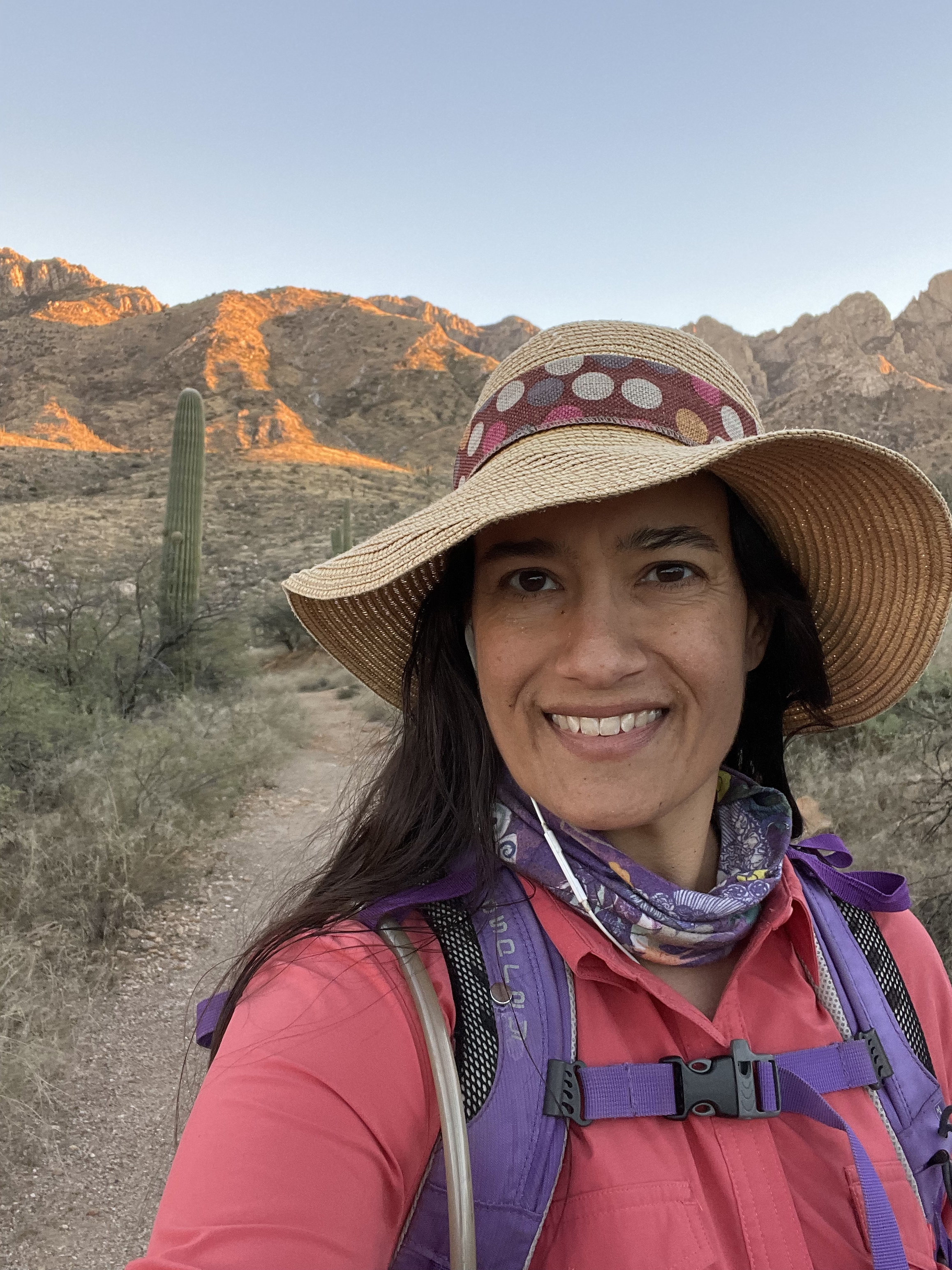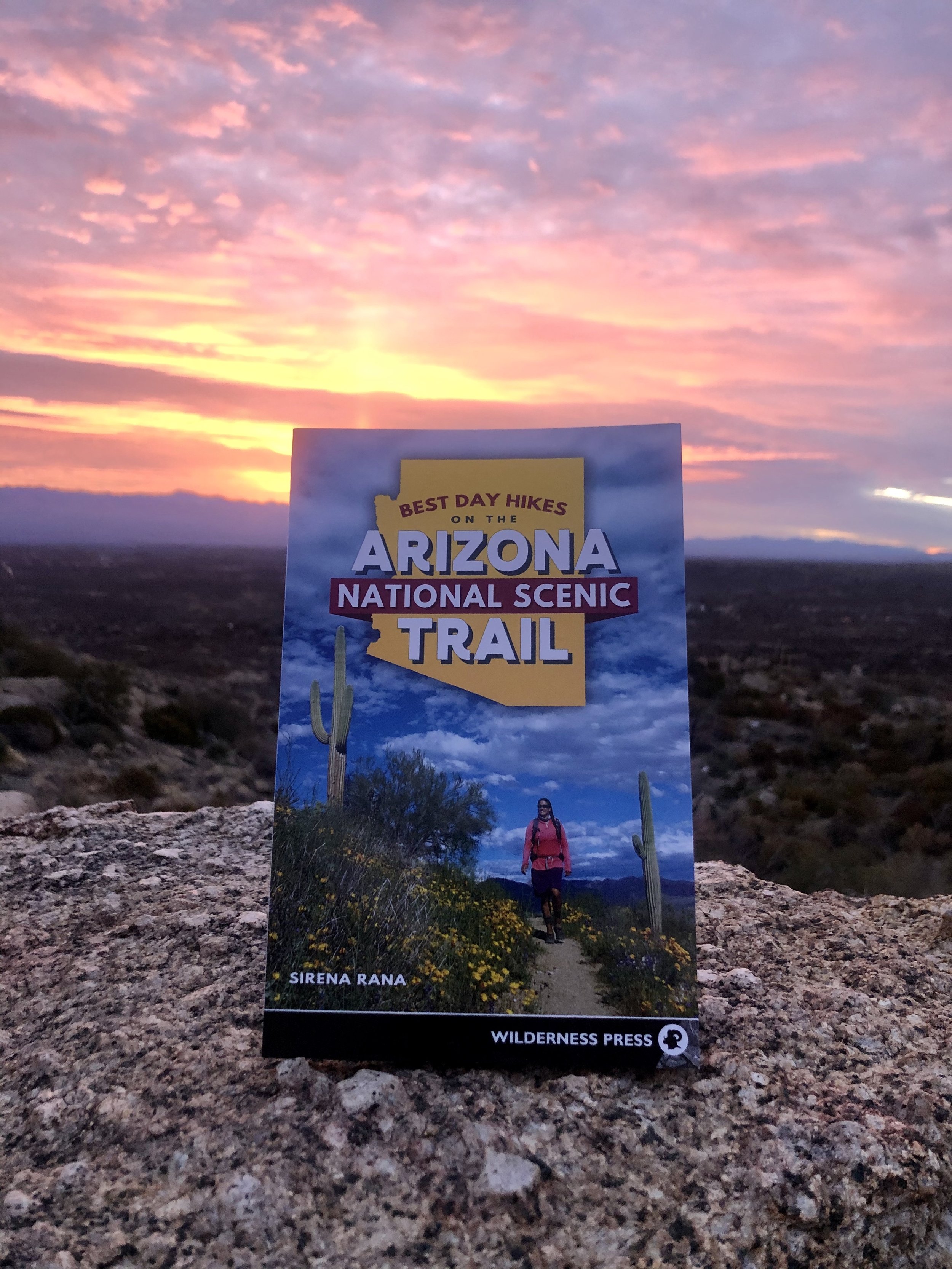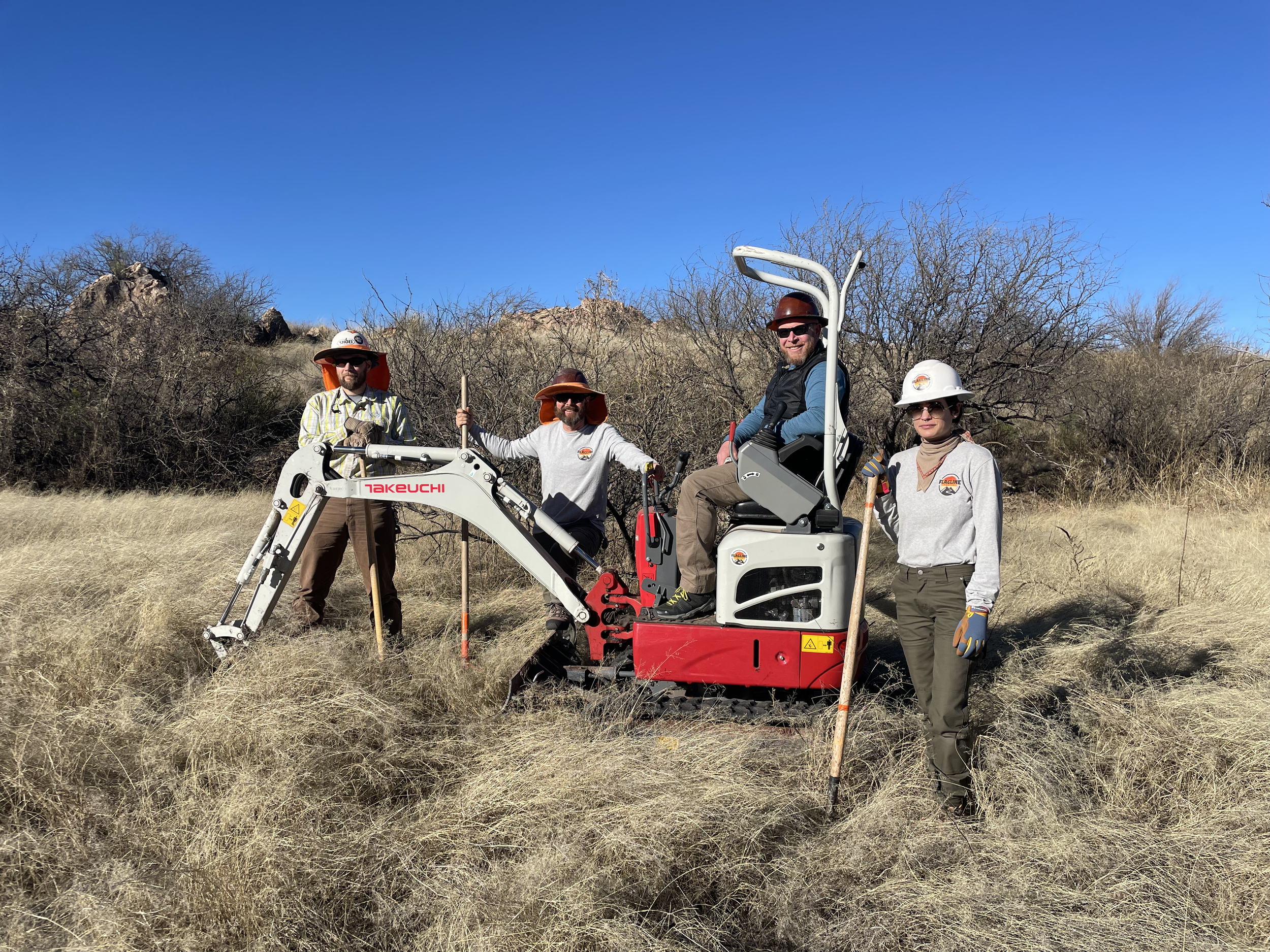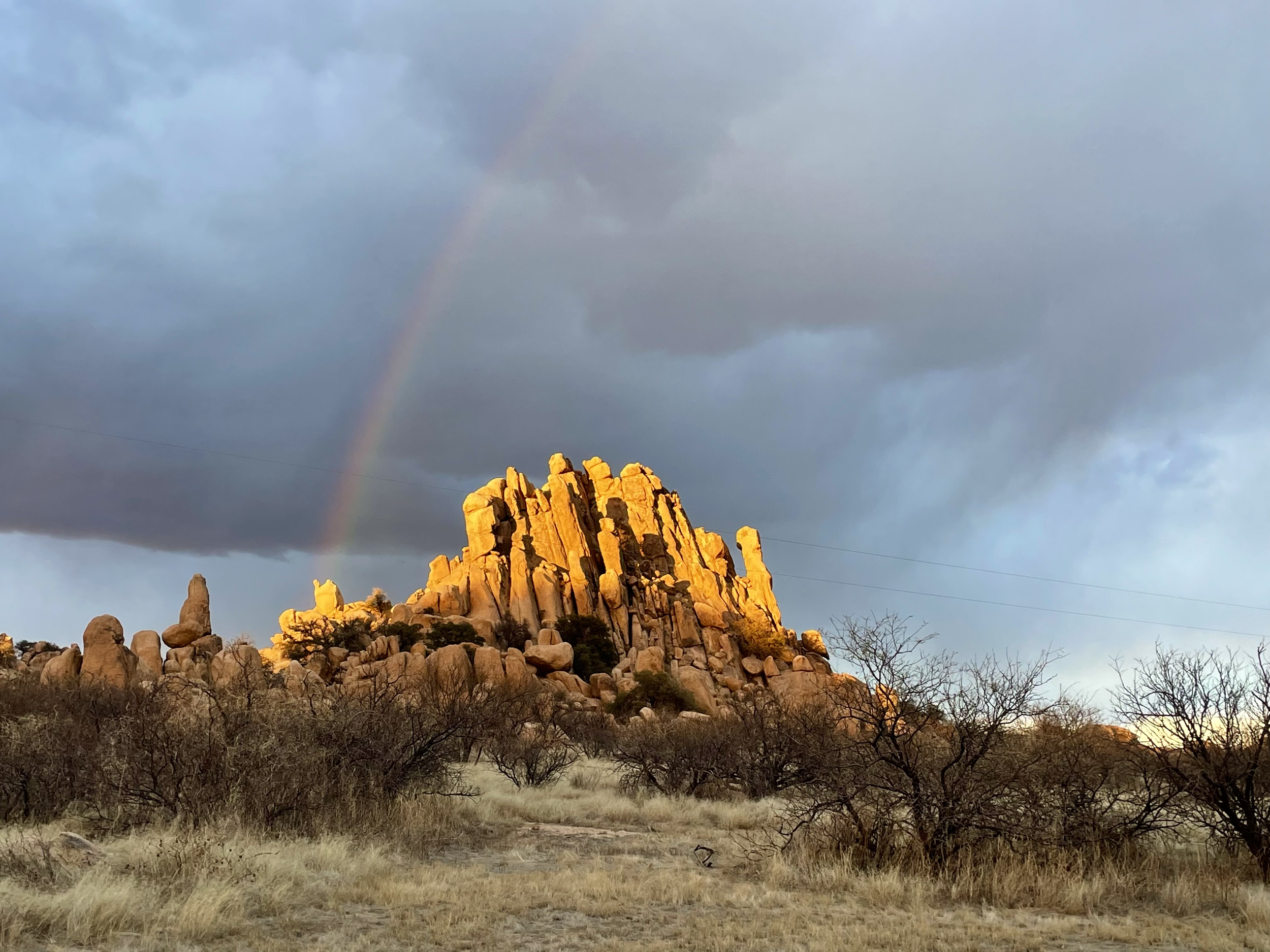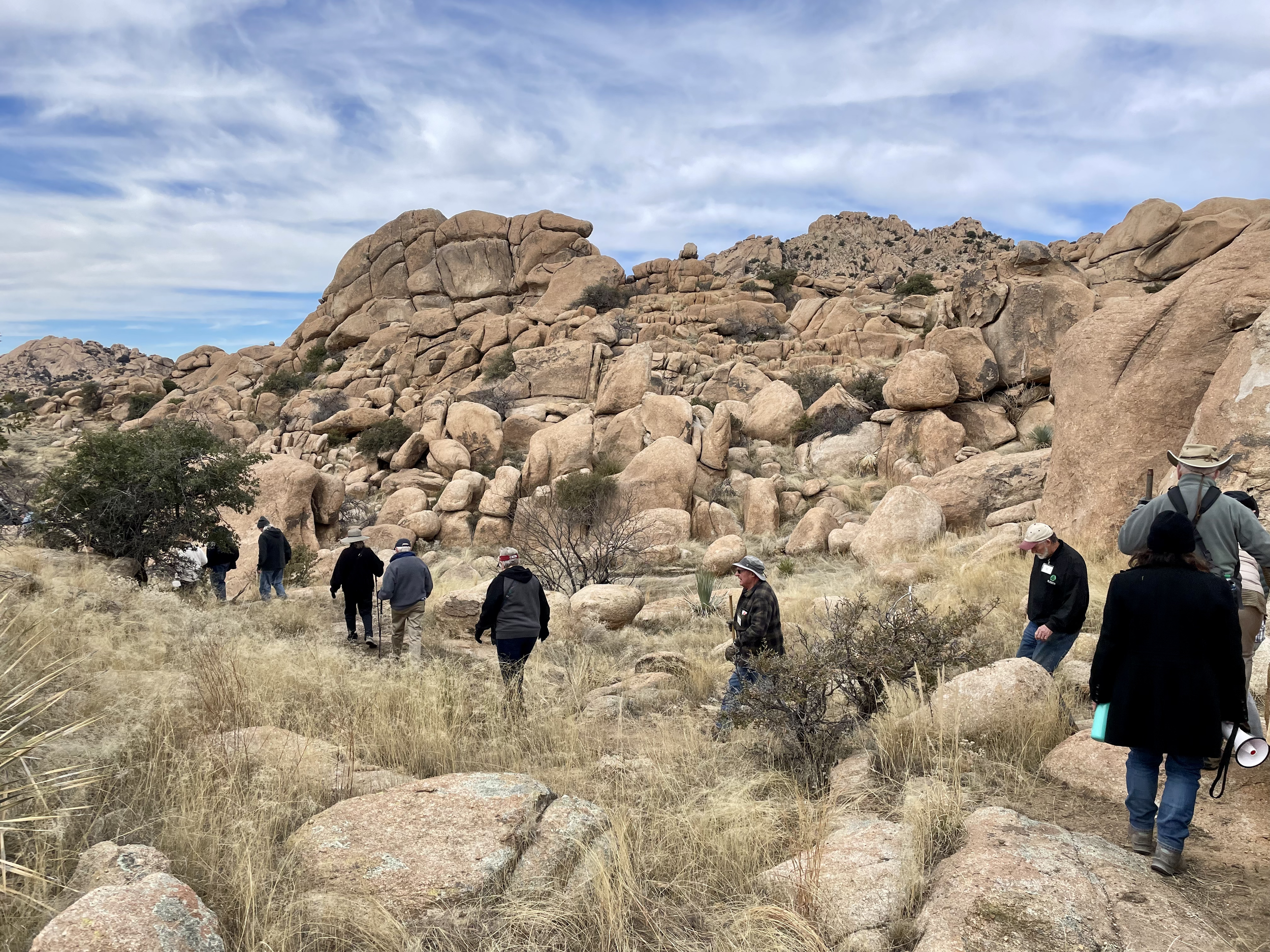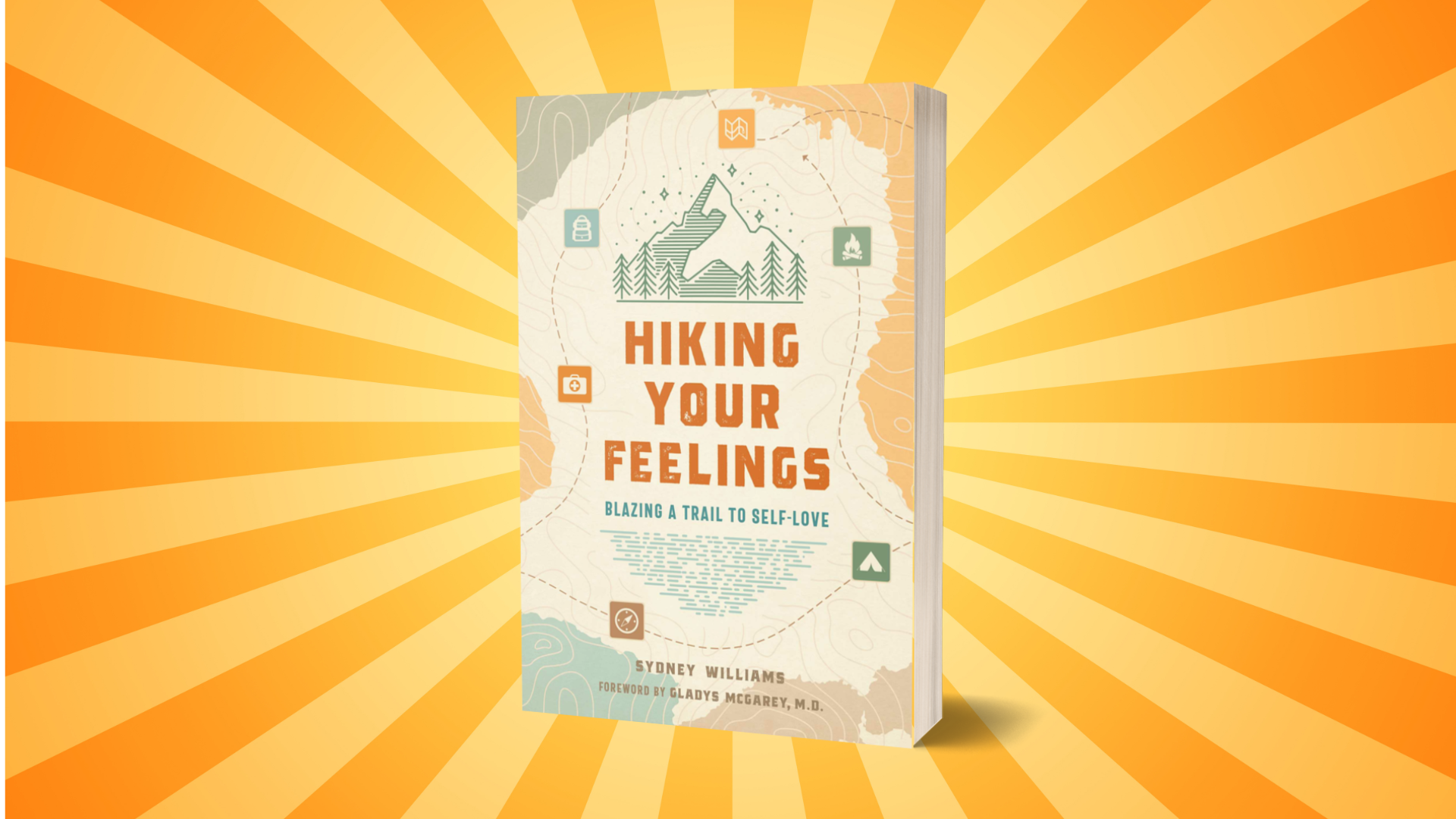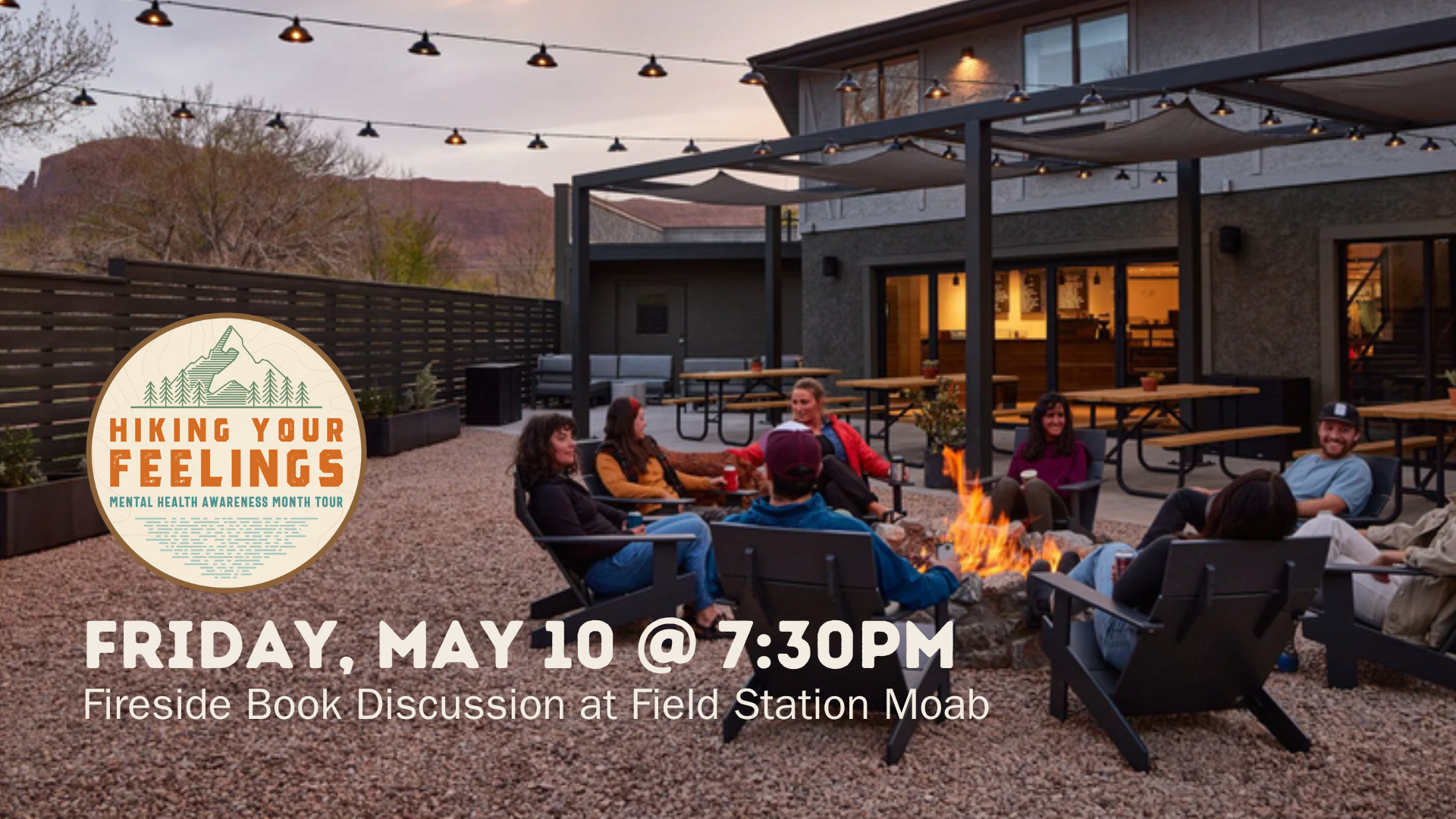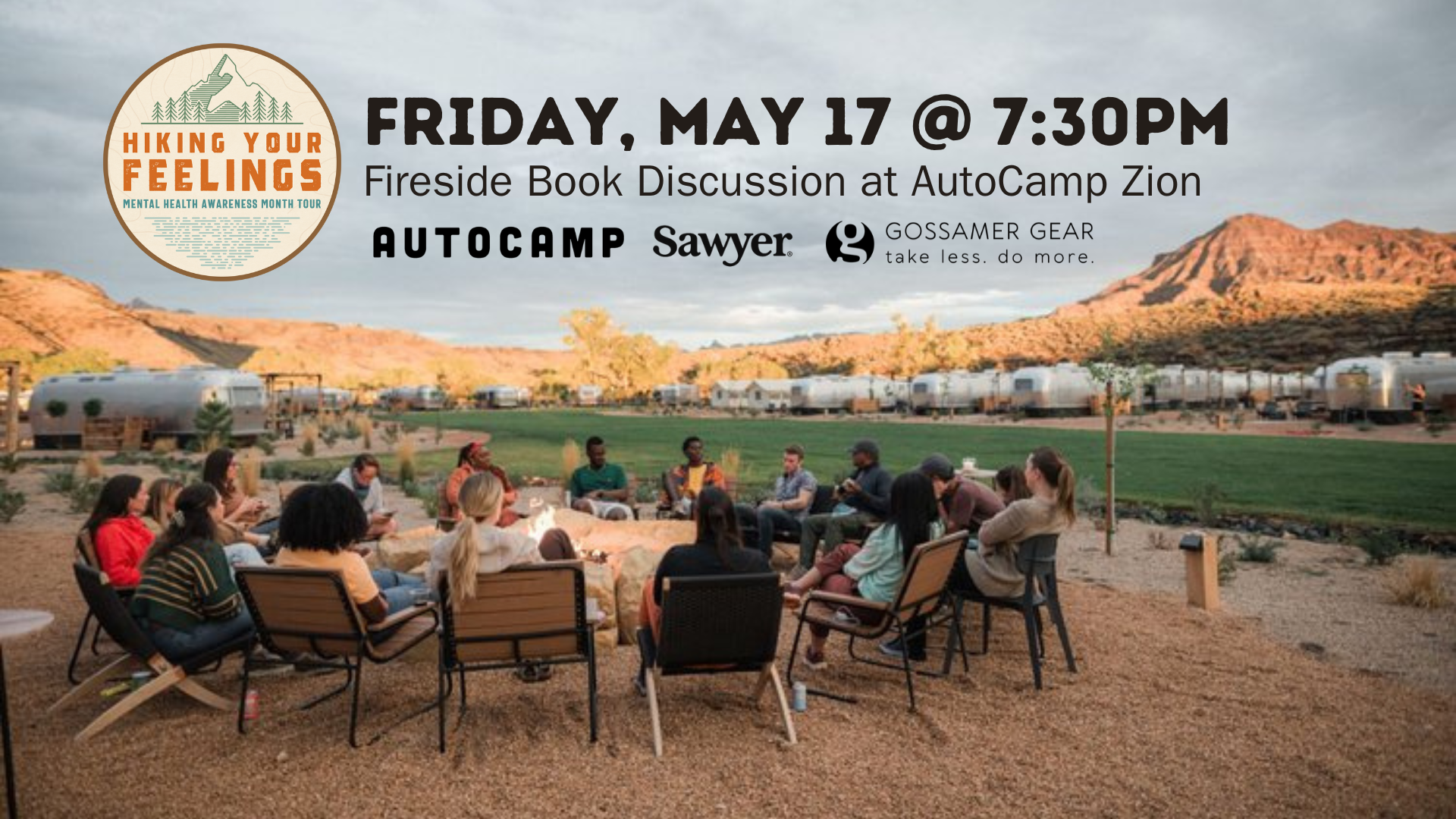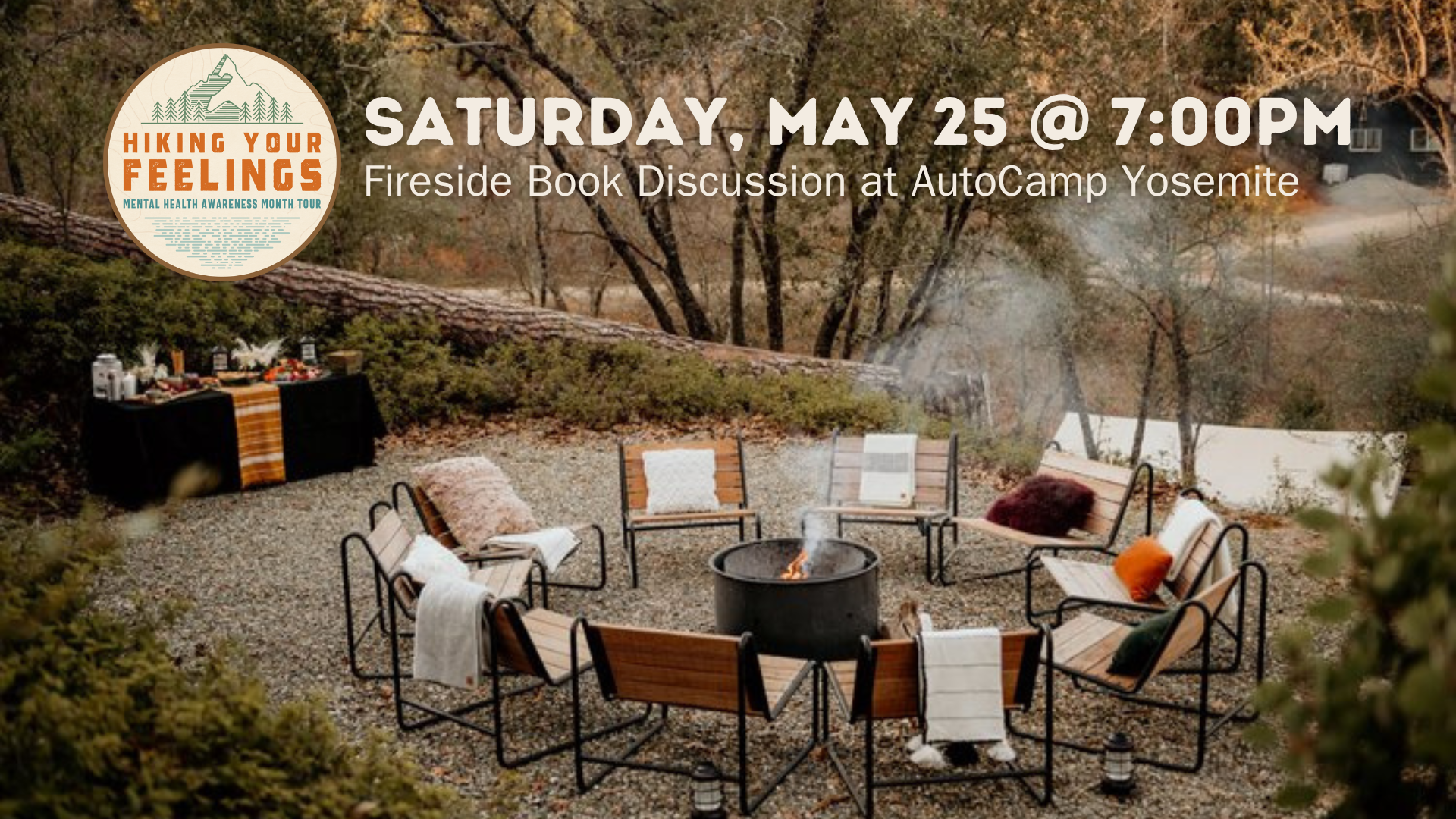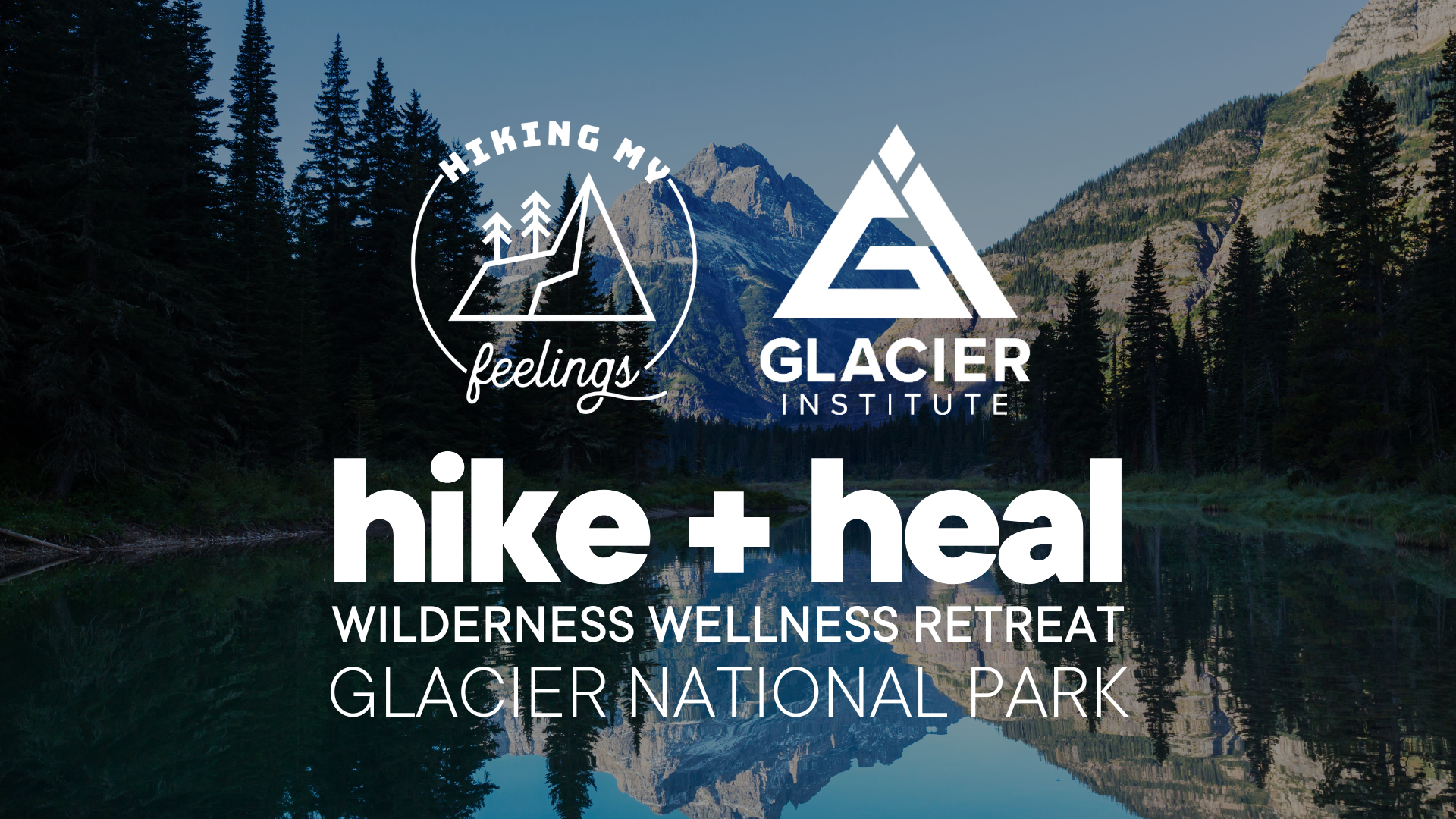#5Women5Years: Blazing Trails with Sirena Rana
Season Two of Wellness in the Wilderness is here and we’ve got an epic mini-season in store for you!
In May, we celebrated five years since we started Hiking My Feelings, and as we were outlining the different guests we wanted to have on upcoming episodes of Wellness in the Wilderness, I noticed a pattern. There are so many incredible humans who have been a big part of our journey - whether that’s helping us get the word out and affirming the work we do, making life-changing introductions, inspiring new adventures and campaigns, or helping us bring our programs to life. Now, we’re excited to share the first of five conversations with five women who have been a huge influence on the first five years of this movement - we hope you love these conversations as much as we do!
Big thanks to the team at Sawyer for seeing the vision and supporting the show, we couldn’t do this without you!
This week we are thrilled to have Sirena Rana joining us for a conversation about her work in trail design - she quite literally is blazing trails and making outdoor experiences more accessible through her intentional and inclusive trail design via her company, Trails Inspire.
ABOUT OUR GUEST:
Sirena Rana shares her love for the outdoors through writing, photography, public speaking and trail design through her company, Trails Inspire. An avid hiker, backpacker, rafter and canyoneer, Sirena's favorite places are the Grand Canyon and the Sky Islands of Southern Arizona.
Inspiring and empowering others to take on their own adventures is her passion. She is especially interested in reaching people like her who didn't grow up hiking and camping. Sirena is the author of Best Day Hikes on the Arizona National Scenic Trail by Wilderness Press.
IN THIS EPISODE:
We catch up with Sirena, who was on the original 20-night season of our Virtual Campfire podcast
Sydney gushes about some Saguaro fruit leather Sirena sent, and Sirena educates about the use of the fruit in indigenous cultures, demonstrating one of the many reasons we love being in community with Sirena - we always learn something whenever we’re out exploring or in conversation with each other.
Sirena tells us all about the trail system she recently completed in the Texas Canyon Nature Preserve and the finer details of trail design and trail building
Part of her trail design includes honoring the indigenous people who have stewarded this land for thousands of years, and protecting native species of plants that are used by the local indigenous communities. Sirena shares the story of seeing the Tohono Oʼodham harvesting bear grass used for basket weaving for the first time on the trail and how the trail names are inspired by the Tohono Oʼodham and Apache
Who is Sirena building trails for? “Suburban Sirena, who moved to Arizona 29 years ago and knew nothing about hiking.”
LISTEN HERE:
SHOW SPONSORED BY:
SHOW TRANSCRIPT:
Please note, we use Otter.ai to transcribe episodes and while the technology is impressive, it’s not completely accurate. Please excuse any missed words, nonsensical sentences, and missed interpretations of foreign language below:
Sydney Williams 00:04
Welcome to Wellness in the Wilderness. Come with us on the trail of life as we inspire you to take a step outdoors to disconnect from the distractions and reconnect with yourself. Sydney Williams and her guests will motivate you to get active and get well. Now, here's Sydney. Welcome to Wellness in the Wilderness. I'm your host Sydney Williams and today I am recording in Sequoia National Park ancestral lands of the Western Mono Tabatalottle Paiute and Western Shoshone People. If you are also wondering what the heck is the history of the land I'm spending time on go to native-land.ca. It's a great starting place to do research to identify the history of the land that you work, live and play on. And it's not the only solution. It's not the only answer. But again, it's a great starting place to start to learn more about the history of the spaces that we enjoy, and that help us heal. So check that out. Today, we are running ahead we're keeping moving on our five years of Hiking My Feelings. This is a mini season five years five conversations with five women who have just been absolutely inspirational instrumental, just super important to our journey here in the first five years of Hiking My Feelings and as we gear up for the next evolution of our work, which is the release and publication of Hiking Your Feelings Blazing a Trail to Self-Love, which will be published March 12 2024. By Mandala Publishing.
I couldn't help but think man I should really talk with like a literal Trailblazer. Fortunately, I know one. So today I'm excited to have Sirena back on the show. She was on the original first 20 Nights of the Virtual Campfire. This is her first time on Wellness in the Wilderness. But if you want to go dig back and see where she was out and 2020 what was going on while we were all just gathering on Zoom and pretending like we were around an actual campfire. A lot has changed for us here a lot has changed and Sirena's world and we're just so excited to have her join us. So a quick little braggable bio, so you get to know and I can kind of lay the groundwork for how baller she is. Sirena shares her love for the outdoors through writing photography, public speaking and trail design through her company Trails Inspire. Let's just sit with that for a second. Like how good does that sound? Trails Inspire like this is already we're feeling wellness, we're feeling wilderness She's literally creating spaces for us to enjoy the outdoors. Okay, let's continue. Her is an avid hiker, backpacker, Rafter and Canyoneer Sirena's favorite places are the Grand Canyon and the Sky Islands of southern Arizona. Speaking of Arizona, she's literally the expert on day hikes on the Arizona National Scenic Trail. She literally wrote the book on it so you should check that out. It's published by Wilderness Press. And she's especially interested in reaching people like her who didn't grow up hiking and camping, inspiring and empowering others to take on their own adventures is her passion and we are just really excited to talk about the new trail system that she just completed a unicorn of a project the birth of something new and exciting in Arizona for the recreation community. Sirena, welcome to the show. Oh my gosh, I'm so glad you're here.
Sirena 03:18
Thanks so much Sydney. It's great to talk to you.
Sydney Williams 03:20
Oh, I love it. So where are you currently you are in a van which was not the case in 2020 I'm guessing you're in Arizona because that is your land that is just you are the You are in my life. Anyway, the leading expert on all things Arizona just period.
Sirena 03:38
Well, I do love it. Here I am in Arizona. I'm in southern Arizona ancestral lands of the tona adome, and the paska yaki and I'm in the Tucson area right now. But I travel all over the place in Arizona and beyond. And I just it's such an interesting and unique environment. I don't come from here. I'm originally from the Chicago suburbs. And so I came out here actually 29 years ago, this week, I started at the University of Arizona, without ever having visited before. So it's like being dropped on an alien planet,
Sydney Williams 04:14
Literally coming from the Chicago suburbs. When was the first time that you ever saw snow in Arizona and what was that like for you? Coming from Chicago where there is no shortage of winter weather.
Sirena 04:27
The thing that made me laugh so hard when I moved here was if it snows, people would drive up the mountain we have a mountain called Mount Lemon here and it's 9000 feet. And so when it snows, people will drive up from you know, the desert floor where it's nice out and they'll drive up and they would fill their trucks with snow, the back of their trucks with snow and then drive down the mountain. And that to me was somewhere. You know, one of the stipulations I had for college was that I didn't want to walk through snow to get to my classes. So this was just so funny. But I totally understand being here now. Because it's a huge event when it snows it's beautiful on the mountains if it snows down here in Tucson itself, or in the lower deserts, it's gone before you know it. And you know if you want to you can always go visit the snow.
Sydney Williams 05:21
Yeah, it's not like being stuck in it.
Sirena 05:24
Right.
Sydney Williams 05:26
Oh, man, that man i the visual of being an Arizona which if you've never visited Arizona, you're like it's dry. There's nothing there is no life. It is just desert. The visual of like a truck bed full of snow just really gives you a little something extra. I love that. Thank you for that.
Sirena 05:46
Especially the truck bed driving through the saguaro cactus.
Sydney Williams 05:51
And now I'm angry. Okay. Speaking of Saguaro cactus, I just gotta say, I have never in my life had such a delectable treat, as the Saguaro leather, or Saguaro fruit leather that you sent us. I loved it.
Sirena 06:09
I'm glad you like it. It's pretty unusual.
Sydney Williams 06:13
It's so unusual. And like I've I've like picked up a prickly pear cactus before which is the closest thing that I can think of that reaches that same depth of color. Like, I kind of want my whole life to be the color of that fruit leather that you sent it's just so vibrant, and it just feels so full of life.
Sirena 06:30
It's beautiful in a lot of people don't understand like that the saguaros have white flowers in like April, May and but then they have bright red fruits right before the monsoon comes. And so the fruits are delicious. They're they're really, really sweet. I don't add anything to it. I just add a little bit of applesauce for texture and put it in the dehydrator.
Sydney Williams 06:54
Oh, my gosh, what it's just absolutely delightful. So I have a question about the Saguaro. Fruit itself. Does that come? Every year before the monsoons? Do they start producing fruit automatically? Like, is there some kind of magic to the fruit of this cactus? Or was it just because I've never had it before that it blew my mind so hard?
Sirena 07:14
Well, you know, it's a really important cactus for the indigenous people here. And it has been forever it. It's a major transition from the really hot, dry summer, in the beginning, like May, June, and then to the harvesting of saguaro fruit. And that the idea of harvesting Saguaro fruits is supposed to bring the rains, the monsoon rains. And so what I was taught was that when you eat your Saguaro fruit, you leave it with the red husk of it up, to help bring the monsoon rains.
Sydney Williams 07:52
I love stuff like that. See, folks, this is what I'm talking about. This is one of the reasons actually, I would say this is probably a primary leading reason I'm not going to rank them. But like certainly top five of things I love about Sirena and the things that I've learned, like even just something as simple as that, just understanding like the the tradition of how this fruit has been appreciated and harvested, and things that I wouldn't otherwise know if I wasn't out hiking. And if I didn't go to the Summit Hut in Tucson and 2019. That's how Serena and I originally met. And there's been a lot of changes in the world since then, for us as individuals and just like as a, as a group of dynamic, creative gals that we are. There's a lot that's been going on. So what are some of the updates from our original first high fives and hugs to present day anything on your heart and mind that you'd like to share as far as trailblazing goes?
Sirena 08:57
Well, I'd love to share about my most recent project that I worked on this year, we completed a trail system at the Amerind Museum, which is the Amerind foundation is an archaeological research institution. And they also have a museum, indigenous art gallery. And they host artists, Indigenous artists all year long, and do a lot of really neat events. So this location is about an hour east of Tucson. And a lot of people know it because there's rest area there with these amazing boulders, fantastic rock formations and stuff. But there's a fence at the rest area so you can only look beyond it and see this fascinating landscape. And everybody that I know who's ever driven there, that's a hiker has wondered, what is it like to hike back there? And so I was shocked in December 2019 I got an email from Eric Aldo, who's the who runs the Amerind Foundation. And he wanted to know about designing and building a trail system on that property that you look at from the, from the rest area. And it's called Texas Canyon. It's got just like I said, Joshua Tree like boulders, really pretty grasslands. It's in the Chihuahuan Desert rather than Sonoran. So it's grasslands and oaks. So I couldn't even believe it when I got that first email, you know, it was funny, because he was like, Hello, I am, you know, writing from the Amerind Foundation, you know, this location is east of Tucson. And I was like, Yeah, I know exactly where you are. I know exactly.
Sydney Williams 10:45
looking longingly at your rock formations for years, sir, for years.
Sirena 10:49
So because the the only thing, the only place that people are allowed right now until the trails open on October 7, with our big grand opening celebration, there's only a little picnic area. And you know, it's among these beautiful boulders, but you always wonder like, what else is over here. And so I did a site visit in January 2020. And I was just absolutely blown away. So one of the things that I do, I thought I'd talk a little bit about my process too one of the things that I do when I'm asked about trail system is, especially if it's an area that I'm not already familiar with, is let's talk to the people who have spent the most time there. You know, like, where are they? You know, where do they recommend, there's a couple of staff there that were really helpful when I did my, my tour. And just getting an idea, so that you're not just starting from scratch, you know, wandering the land. And so, I went on this initial visit, everything was great. Mind you, that was January 2020. So everything shut down. The Amarind Museum had to stop accepting visitors. And the project was off the table for a little while. Until in 2021. There was finally funding to do the trail design in December. And so Mark Flint, who is my mentor, and who taught me, pretty much all I know about trail design was an incredible person, he's been designing trails for like 40 years, we went out and we did trail design of approximately five miles of trail in a series of loops, as well as one out and back trail. I like stacked loops, where you can have a lot of options for different lengths and views and different ways to put it together. And so that was just one of the most amazing weeks I've ever spent. Just getting to know this landscape. I had done some work on like Google Earth, and you know, using maps and things like that. But you can't, you can't tell until you're actually there on the ground. And we had such a blast, I mean, imagined to be given basically a playground of like the most amazing land that you know, that you've looked at for years. And so another thing that I really liked is because they are so involved with the indigenous communities, the terminal and the cercado, Apache, they were very insistent that certain things were included in the trail design. So for example, the autumn were used bear grass, for the baskets. And so that was one of our jobs was to find, let's find a good trail. That's nice and easy, good access for harvesting, bear grass for baskets. So things like that, you know, those are called control points. So you have positive control points. So those that's like a really cool view you want to see or like a really cool rock formation or, you know, something, something of note, cool Cliff band. And then you have negative control points where areas that you want to stay away from so really deeply cut drain edges or, you know, areas that might be dangerous or in any way. Also, you know, just the areas that you want to stay away from that aren't obviously absolutely, you know, anything with cultural or biological significance. Since this was private land they'd already done all of the necessary surveying and studies on the land. There's ongoing studies on the land for archaeology and botany For botany, and so. So we were able to avoid sensitive areas. And then you just walk the land. And things come out. And you're always concerned about sustainability. That is the number one thing. So yeah, it's good to see the cool stuff, good to stay away from the bad stuff. But the most important thing is, is your trail going to be laid out in a manner that will allow it to shed water and go through all sorts of weather systems, people walking on it, all of this stuff, and still be sustainable not to, you know, we've all been on those trails where like, it's a rut, you know, it's like, it's all degraded into like a V shaped rut.
Sydney Williams 15:50
Right.
Sirena 15:52
And so that's an example of like, unsustainable, the water isn't being diverted off of the trail. So it's running right down the trail and eating, it's basically. So trail design is also, you know, very important to, actually, I think that's, that's pretty much the most important because there's a saying that, if you design a trail badly, you're just willing a bunch of work on to future generations. And like, just, I've worked on trails that were not sustainably laid out, and you just can't win, because they weren't put in the right place in the first place. And so they're just always going to have these erosion problems, even though we're in a desert, water, it's all about water management. Because when we do get water, it's a lot all at once. Also, it doesn't necessarily all soak into the ground. And so you have to have ways of diverting that. And so we did get to, you know, we were able to put together like five miles of trail. And, you know, that was December 2021. And we were really happy with what we found it was, you know, super exciting project. And then we just, you know, we were waiting to find out who and how it was gonna get built. So, I had looked into a bunch of different options. And I ultimately went with Flagline Trails, run by Matt Roberts in Flagstaff. And he's one of the best, I am so impressed with his work, I knew his work was good, but then actually to have seen it in action, and completed, and to see how that trail system is, you know, working right now better than we could possibly imagined, as far as like sustainability, shedding water, things like that. So Matt Roberts, came out to Amerind to do a site visit in March of 2022. And then there was a little bit of a lull because we had an idea of how much it was going to be and how much how long it was going to take. And then there was some fundraising that needed to be done. So months go by, and in November of 2022, I took a bunch of board members out on a bushwhack trail, an off trail hike, to where the trail would eventually be. And it is so fun to take people out on things like that. But nobody's seen before. Nobody had ever seen this area. Nobody's ever, you know, the board members rather, obviously, other people had seen it in the past. But the public had not been been able to see these areas. And so I took them on a little hike up to this beautiful saddle, it has an amazing view of all these rock formations around. And then I got the call in December 2022, that they had the money and we could start the build. So I was just super excited to finally you know, because this has been like I said, this has been since December 2019 that I learned about this project. And so to like actually get the go ahead, and to be able to tell Flagline Trails. Okay, we're starting January 3, was amazing. And it kind of happened really quickly because we had planned on maybe starting in March and I'm so glad that we didn't because by March, it was already getting hot. They are also from Flagstaff, the crew and so a lot colder out there. And also that place that since it's grasslands, it's really snakey, once it gets warmer, and you know if there's a trail not a big deal, because you can see the snakes, but if they're you're building the trail through the grasses, it's more of a problem. so we started January 3, and how that works is um Mark and I were in charge of going in, going through, and actually, it's called flag line, like Flagline Trails. And it's called tight flagging. So think of the initial design as like a rough draft, you know, rough draft, we kind of know where we're going, we, you know, have an idea of where you know, what locations we want to see and things like that. And then we were able to go through and refine that, when we were going to do the type flagging because the, the initial design is more of like a larger corridor. And then the tight flagging is really like this is actually showing, you decide either you're flagging the outside edge, middle or the inside edge of the trail. And so that's very specific to where the trail builders are then going to come through and they know exactly where to put that trail. What was really neat. Oh, go ahead.
Sydney Williams 21:04
No, it's just what a cool process. And I guess one of the things I'm curious about, because you had heard about their great work at this particular with this particular building group, is this a collaborative process between designers and builders? Like when they get out there? Do they see stuff that you might not have seen? Or is it pretty much like you've got it so dialed in, and then they just come and you guys work together to actually build the thing.
Sirena 21:27
So this was a very much a collaborative process. And it wasn't just like me, and the guy who was in charge of the whole company, it was me and the crew members, because all I wanted was the best trail possible, you know. And the first we noticed, like, the first time that we went through and did that rough draft, like we were going and seeing cool stuff, but maybe not getting there the most interesting way. Or maybe, you know, you could, we found that you could get through a lot more of the rock formations than we originally thought we thought we'd have to keep it in the grass, it's because so it's like rock formations, and then grasses in between. So we thought we'd have to kind of keep it in the grasses, but this place is so neat, because there's passage through these rock formations, where you wouldn't think that you'd be able to put something that wasn't super steep and unsustainable, but you do a little poking around, and you can find these ramps and really interesting things, so absolutely. You know, I, I am all about collaboration, and I just want the best experience at the end. And I think it's fun, because, you know, not I can't see everything, you know, in there, I'm out there for, you know, it's might be the light might be different, you know, it might be, you know, who knows. So to get that, those different opinions and, you know, working together with them. So I was on site the whole time, just in case, also, you know, just checking on the project and being there in case we had any of those design changes that we wanted to make. And the trail system actually grew by a half mile as a result, but it's where all the good wiggles are. And so, like, just super cool stuff that we hadn't seen on our first pass. And so yeah, it's very much a collaborative effort. And, you know, you just want the best for the, for the land, really, and the experience. And one of the things that I don't think I mentioned is that I was very insistent, I would like to make trails that are accessible to a wide range of people. Because I don't, I didn't start out hiking or backpacking or anything like that, until I moved away for college. And so like, there's a lot of people, you know, that don't have that background. Also, this place is right off of I 10. And so there's a lot of people that are like traveling around doing other things maybe going to see, like the Wild West stuff, and tombstone and things like that. And so they're, you know, there's, it's not necessarily just going to be hardcore hikers that come there. And so I tried to think of, so I designed for the Sirena that moved to Arizona 29 years ago, and didn't know a single thing about hiking or trails, or, you know, navigation, any of that stuff, you know, and so, if I can think about that user group, the other user groups are going to have a good time too. But you're, you know, in there are certain trails that are harder and longer, but to have that really important entry level experience, where you know, Sirena from the suburbs could hop out of her car and go safely and have a great time.
Sydney Williams 24:55
I love that and I think what you just said has kind of unlocked a layer that I knew to be true, like, I truly believe that everybody on this planet, we're all so much more alike than we are different. And I love hearing stories from people who have also found like, whatever their version of Hiking My Feelings is for them not just like the practice that I do when I'm hiking and spending time outside, but like how passionate I am about the work that we're doing, and the message and all that stuff and what you said about how you design for suburban Sirena. Like I love that because it's like your version of me developing programs that I wish younger Sydney had to learn the language and the coping skills that I just didn't have any awareness of, during some of the hardest years of my life like that connection to younger versions of ourselves less experienced versions of ourselves, like, I, I think sometimes I take for granted. And I assume that everybody's living life that way, and everybody's doing work in that way. And I know that that's not true. So I just wanted to like, take a moment to reflect how cool it is that you've created this position for yourself. And this, this way of working and collaborating in ways that feels really good to you and is bringing beautiful things into the world. It's just it's so cool to see those little alignments, regardless of industry, regardless of what we actually do day to day for work. That just kind of connects those dots between just like being a passionate human and I love hearing about the whole process and everything that you do to bring these trails to life, I might never build a trail ever. But I think some of the stuff that you're saying ties directly back to like the journey that is being human and finding our own way through life. Right. Like we we want to go and see the pretty stuff, those positive positive control points, like we want to get to the nice stuff. And we often look for like the most direct route but I loved the part that you were saying about like, well, you know, maybe the lights a little bit different in this this windy way about around this particular rock formation is the way to get to the next one instead of just straight shot in it, you know as the crow flies, so there's so much beautiful like life metaphor stuff wrapped up in like the physical creation and design of a trail. So thank you so much for, for sharing that part of the process. That's so awesome.
Sirena 27:18
Oh, you're welcome. You know, I my mentor, Mark says trails are like living beings, and they'll talk to you know, it's true when you're like, wandering, you know, you're looking around for different routes and stuff. Sometimes, it'll just be like, Oh, okay, you're supposed to go this way. You know, and then like, a line will open up.
Sydney Williams 27:37
And I think that's funny too. Like, if you if you end up if you ever if you've ever wandered off trail, and you start following like a game trail, you're like, oh, like I like the route that this deer probably took to get here. You know, like, they're just following their nose or, or whatever their instincts are to get to where they're getting. And sometimes it's it's nice to to veer off course, and allow those things to kind of show up and redirect the experience.
Sirena 28:02
Yeah, I agree. And, you know, like I said, it was just all about being open to the possibilities of what we could experience there. And I'm really happy that we ended up so we finished the build. And end of March, and was such an incredible day, it was just the best day, we did a combination of hand building and machine building. And so when the machine finally connected our last little piece, it beeped twice, and we all cheered. It was great. And so we finished the trail system. And I'm just really happy with the, like the different levels of experience that you can get, if you're a runner, you could just go do a bunch of laps, you know, you could just run around and see new stuff the whole time. And you could get a really long trail experience out of that doing the loops in different directions and things like that. Or if you want you can just go on the we have we have an interpretive loop that will have a lot of interesting, interesting interpretive signage about the the land, the history, the indigenous people of the area. Giving people those different experiences like my dad came to the hike our trails. And he's, he's 83. So I was so excited that he could actually go do one of these trails. Like he doesn't hike. He lives in the Chicago suburbs. So,
Sydney Williams 29:27
so perfect example.
Sirena 29:29
Exactly, exactly. My user group so. So yeah, it was it was awesome. First of all, to have my dad on my trails, and then to see it in action. You know that,Yeah, this is something that you know, people take their time and stuff you can go do and they don't have to do the whole loop. They can go out and do a little bit. There's also over 40 benches that are going to be installed so that people have places to sit. There's these beautiful big oak trees on the property and So just giving people you know, so I come from, when I started hiking, I got really into like the long distance hiking community. And it can be really easy to lose sight of the fact that that is such a small fraction of people, you know, that like that have that experience that want that experience. And that, you know, having to dial it way back. And that's one of the things that my book on the Arizona Trail helped me to do was same sort of thing. Like, slow down, let's write this book for the person that doesn't really know anything about the Arizona Trail about hiking, it has a lot of interpretive information about, uh, you know, everything you're going to see and things like that. And just to, to give that slower experience, rather than I'm going to hike 30 miles today. totally valid. But yeah, pletely different experience.
Sydney Williams 30:55
Yeah, 100%. And I think that's a really cool part. Part about what like, literally that your dad is your user group. But I think going back to just taking everything into consideration like that, I mean, like, this is just this is woven into who you are as a person, this is how you do business. This is how you design trails, like, talk about like walking the walk and talking the talk. Is there. Like how long have you been designing trails? And what was? What was the the, like, when you first started with your mentors, or hiking or whatever led to you starting to design trails? Did you ever imagine that you would be working on a project like this? And like, is that? If so? Like, how did this meet or exceed or whatever your expectations for that experience? Because this I mean, from everything you've said, just between the initial outreach, you knowing exactly what this land is and what this organization does, and that respect for the indigenous culture around this especially like, actually, I've got 9000 questions. Sorry, I'm thinking a lot. The first one. The first one I want to ask is I want to call back to that bear grass and the Indigenous women and that's what they're gathering it for baskets. I remember you called me when you saw your first women gathering grass, can you walk us through just like the emotion of that experience, like seeing the the use that particular user group having access to an area where they can harvest, I'd love to hear about that, because it was so powerful when you shared it.
Sirena 32:32
It was, it was an amazing moment. We, they had a running event at the Amarind museum. And there was a group of tahona autum, there was a family there that was singing as the runners took off. And as they came back, and afterwards, a couple of my friends had come to hike the trail with me these are like, you know, my trail besties right, and, you know, super excited to take them on this trail. And we come over this rise. And I see this whole group gathered sitting on rocks, collecting bear grass, you know, putting it into bundles, and, you know, organizing it and you know, just exactly what Eric and I had hoped for. When we came when we were coming up with the idea of this trail. Another thing was, we made sure that in areas that did have bear grass that it was not to be moved, you know, you you route the trail around the bear grass, so the bear grass stays, so to like see this family all working together to harvest the bear grass, and you know, knowing that that was going to make baskets and it was such it my heart was so full, and the trail is actually now named the bear grass trail. And all of the trail names will be translated into autum and Apaches.
Sydney Williams 34:06
I just, God, I love this. And I think about like the ripple effect of the work that you do like not only are you creating a recreation opportunity for people from various backgrounds and various experience levels and, and even just a desire to be outside to your point. Not everybody is a hardcore hiker like this is a this sounds like a great opportunity to get some brand new folks on a beautiful new trail. When I think about like just as simple as how good I feel after a hike on a really well designed trail like this is something that I didn't really have an awareness of consciously and I didn't have language for when I first started hiking, but through our friendship and just hearing about this project and all the different parts and pieces, like as we've been exploring around Sequoia. We're like, there's some trails where you're just like, dang, like this is really good work like it's just so awesome. Um, and I think about like, even just like the smallest little percentage of a ripple effect, like me as a user enjoying a trail, being inspired by it, and just being wowed by the elements of it, and the different areas that we're passing through, let alone like the opportunity to learn something about the history of that land through the interpretive signage through different events, like when I get done hiking, and I feel great like and then I go to the store, I'm really nice to the people that I see, right, and like that could turn somebody's day around. And then they're really nice. It's like this, like ripple effect, through total strangers, just because I had a really nice experience on a trail. Like the ripple. It's not even just about how many users we get, because like, that's something I've been really dissecting for myself lately is like measuring what matters and the impact and like, yes, obviously, like, you're gonna want to keep stats on how many people get to experience and use this trail. But then there's the intangible stuff like, of those people, how many people had an awesome experience, probably all of them, because I've never gotten done with a hike and been like, Well, that was a waste of time. So it's like, there's just like, I just think about this one trail system, in particular, like you poured your heart and soul into it. Together with this building team, this incredible collaboration with the trail builders and the foundation, like, there's just so much love and respect that went into this system, like, it sounds like, regardless of what the trail looks like, and it sounds like, it's incredible, it sounds like just the experience of being in that kind of space, where so many people care for advocate for, and are trying to increase access to such a beautiful area, that in and of itself is inspiring to me, like that feels like, just love in a form that we can experience on our two feet, you know what I mean? Like, it's just, it's so cool to think about how far that experience can go for one person. And where that can lead to.
Sirena 36:53
Everybody associated with the project just was so excited about it, you know, I mean, for different reasons, or, you know, whatever, but everybody was so enthusiastic, and so wonderful. And, you know, you'd call it a unicorn project, because it is, it's like the most wonderful landscape and the people and the, you know, the attention to detail and the interpretive part of it, and, you know, all of those things, and, you know, stewardship of land, and just all of those things came together so beautifully. And the trail system is not even open to the public yet. So it opens, like I said, October 7, but we did some compaction hikes previous to it getting hot. And so we would take like a group of people basically, and be like, stomp on the trail, you know, and because once you once you clear the grasses and stuff, you basically just like tilled the land to make it, you know, the seeds in the land. And so if you don't smush it down, it's just gonna grow. So we had a bunch of people out there for these compaction hikes, and just taking people out on this trail on this trail system is so wonderful to see, I, you know, have taken a lot of people out. And just to watch, there's so there's like, a little part through the grasslands, and then you come over this rise, like I mentioned, and you can see there's a big pond and there's cottonwoods, and rock formations and stuff. And I just love to watch people's faces as they come over that bridge. Because the awe and the wonder, and, you know, that's, that's what I'm living for right now. And again, giving people that experience, and, you know, also having that experience myself, I have all these wonderful trails now that I can be on. And I do it all the time. I've been camping there with my van. I mean, I love I love being on these trails. And so you know, just to see that, and to evoke that kind of an experience for people. I read a or listen to a podcast about awe, it was an Outside Magazine podcast. And it's so so precious. And something that you know, feeds you for days on it
Sydney Williams 39:15
100% Oh, man. Well and I'm just thinking too about like you said about the compaction hikes and so you like you, you know, you remove the grasses, but now the seeds are in the ground and you got to stomp it down to keep that path clear like this, this path that we've worked that we've you know, done the work to remove the things that aren't supposed to be there for the sake of this thing now emerging and being available like there's so many ties to life for that like like we got to like we got to do the work we got to we got to keep peeling we got to find the things that work for us the work that lights our souls on fire, the the trails that inspire us and give us that sense of awe and wonder and just like how the heck did we get here like I love I love those moments that I've lived for those moments and, and you're talking about taking these people up over the ridge. And I think about in the work that I do, like just connecting the dots, like showing people sequoia trees that have never seen them. It's like, we're all just like kids, right? Like, we're just staring up, like, What the heck are we looking at, like, it's just, there's so I feel like one of the biggest lessons that we've learned being out here in the wilderness and, and doing what we're doing in Sequoia and just spending time in one place in such a Not, not developed place, like it's not the concept of wilderness and like the National Park System in and of itself is innaccurate, like, we can't protect things to be the same forever. Like, it's just not how a planet works. That's not how weather works. That's not how anything that we're doing is actually structured. But that sense of awe and wonder. And the like, I just think that there's even more of that to be had when we embrace the changes, like you were talking about having to compact the land, and like making sure that these things are sustainable and shedding water appropriately. Like when you called me after the first rains on your trail, and you were like, everything's cool, we had a fire, nothing's wrong, like, we had a fire and we had rains and the trail is beautiful. Like, it's just it to me, it feels like one of those validating moments when you run up on something like you have a plan for something in your life. And then like weather happens, and you're like, I hope I'm prepared. And if you're not you figure it out. But if you are, you're like, dang, I did the work and like we did a really good job. So it's I imagine that's just got to be gratifying on so many levels, because like, like you said, everybody that's involved in this project is so excited, and they love it for so many different reasons. But to have something like we spent so much of our lives working, or we should air quotes, like in this culture, specifically, you're like, if you're not trading time for money, you are not productive, and you are a failure in society. But like, all I hear here is collaboration, acknowledgement and deep respect for the people that have stewarded this land for 1000s of years, the future of what this land could hold for future generations. Like it's just, it sounds like the work that you've do what you're doing specifically in this part of the country with this particular project is just like the embodiment of literally everything you've ever cared about. And, and a real beautiful example of what's possible when you get clear on what you want to do and why you want to do it. Like you want to create trails for suburban Sirena, here's why. You know, and then like the what and the like the who and the how comes through, like the Amerind foundation reaches out and they're like, hey, PS, we'd love your surfaces. This trail builders like yep, this is going to be the most collaborative, beautiful experience of your career so far, like, I just love how, how perfectly and beautifully everything aligns when it's right. And it makes those times that are hard in between a lot more. A lot easier to look back on, I suppose because it's hard when you're in it. But on the other side of that, like there's just such a depth of joy for being able to complete something like this. It sounds like.
Sirena 43:12
Absolutely. You know, and that goes back to your question you asked me before, like, when I started doing this stuff, did I ever imagine this happening? Absolutely not. I started volunteering to help build the Arizona Trail in 2007. And it was just something that I was doing because I wanted to meet other people who were interested in hiking the Arizona Trail because I was going to be section hiking it. And so I pretty much just did it to meet people, but then it's so amazing. It's so amazing to like, be there on land, you know, out there. First of all, you're outside. You're with people that are usually pretty cool. You're, you know, making something that's going to provide all sorts of things to people. And then you get to walk out on the trail that you built.
Sydney Williams 44:07
You literally built this. Oh, okay, so the opening is October 7. Is this open to the public? Can people come from all over the world to experience this beautiful trail now that we've hyped it up so much? Like what's the scoop on the opening and when people can come enjoy your creation?
Sirena 44:26
Right. So the ribbon cutting is at the Amerind A M E R I N D Museum and the ribbon cutting is at 9am on Saturday, October 7, and we'd love to see people there.
Sydney Williams 44:39
Yes. All right. And if there's anybody listening this like, you know, I've got 1000s of acres just sitting there begging for a trail. What is the easiest land Serena sounds like she's got a real good head on her shoulders and she could like really get this get something going with us like how do people engage you for the work that you do.
Sirena 45:01
So I have a website trailsinspire.com. Also, my email is Sirina at trailsinspire.com, and I'd be happy to discuss collaboration with folks for trail systems or, you know, all sorts of things having to do with the outdoors. But you know, the trails, the trail design is just really near and dear to my heart these days.
Sydney Williams 45:23
Yes. Ah, well, Sirena, last question. And it's a doozy, and I'm gonna put you on the spot. So You're welcome in advance, take as much time as you need if you had a magic wand. And with this magic wand, you could do anything you could bestow knowledge upon the entire planet, you could remove, you could remove a behavior that's not helping anyone. What would you do with your magic wand and who would benefit?
Sirena 45:56
Well, let's just keep going with this theme, I would make it so that people understood that we're a part of nature. And that, you know, a connection with nature is very important, and can change your life.
Sydney Williams 46:11
Well hot dog, that's a mic drop, if I've ever heard one. Thank you so much for being here. And as a part of this conversation series here, this little mini season sponsored by our pals at Sawyer, Sirena, I just gotta say from the moment that we connected online, to our hug at Summit Hut, Tucson, and all of the guidance and beautiful pictures and just like you're one of my favorite people to celebrate with, and I know that you are a safe space where I can just share good news and not feel like I have to preface it with anything or apologize for it. And that's one of the things that I love most about our friendship. And I just thank you for for the introductions to different companies and different epic humans like Liz Thomas and everybody else that have come through my life via our friendship. I'm just eternally grateful to know you, and be inspired by you and the way that you blaze a trail through life, to self love and literally making recreation more accessible to more people, like suburban Serena. So thank you for being you and for everything you do and for being part of our life here at Hiking My Feelings and for me personally.
Sirena 47:17
That's so sweet. And it has been a joy to see your progression through the years. I mean, from when we first you know, made contact years and years ago, even before that summit hut meeting. I'm just so impressed and happy that you found your way.
Sydney Williams 47:33
Cheers to that. Everybody. Go find yourself someone like Sirena who hypes you up, who brings her magic, who just inspires you to be like the best, most creative version of yourself because that's, that's what we need more of in this life. So, thank you so much for listening to this episode of Wellness in the Wilderness. We hope this conversation has been a breath of fresh air. Until next time, take good care of yourself, take good care of each other, dream big and be kind. We'll see you next one. Bye.
Announcer 48:00
Sawyer is more than an outdoor company. Every solar product you buy, contributes to our common humanity, bringing Sawyer water filtration systems to people in need all around the world. In just 2022 alone. 260,000 households in over 45 countries received clean drinking water through Sawyer filters. Over the past 10 years, we've teamed up with over 140 charities in 80 countries to provide long term sustainable relief, domestically, internationally and in disaster situations. Together, we're saving millions of lives. Thank you. Have you ever spoken unkindly to yourself? Do you realize when you do, are you ready to make changes but find yourself completely paralyzed by the choices in front of you? We live in a hyper connected always on world and frankly, it's exhausting. Let's make time to disconnect from the distractions and reconnect with yourself. Hiking My Feelings exists to help people discover the healing power of nature. kickstart your healing journey and grab a copy of the book that started our movement, Hiking My Feelings Stepping into the Healing Power of Nature, named one of Audible's best hiking audiobooks and available wherever books are sold. Visit hikingmyfeelings.org today to learn more. Thanks for joining us on this week's show. We hope this episode has been a breath of fresh air for you and has inspired you to find your Wellness in the Wilderness. We will reconnect with nature and you again next week.
